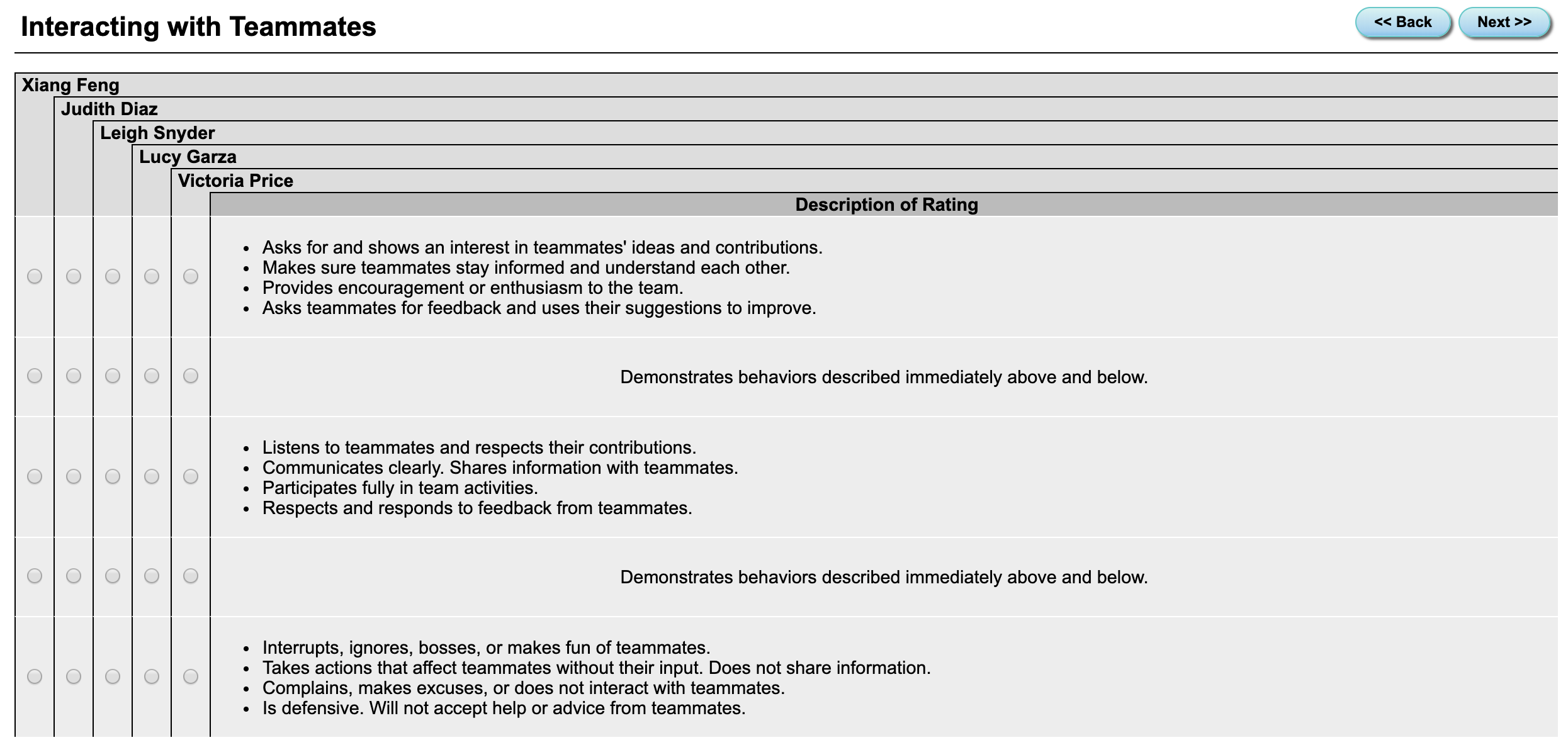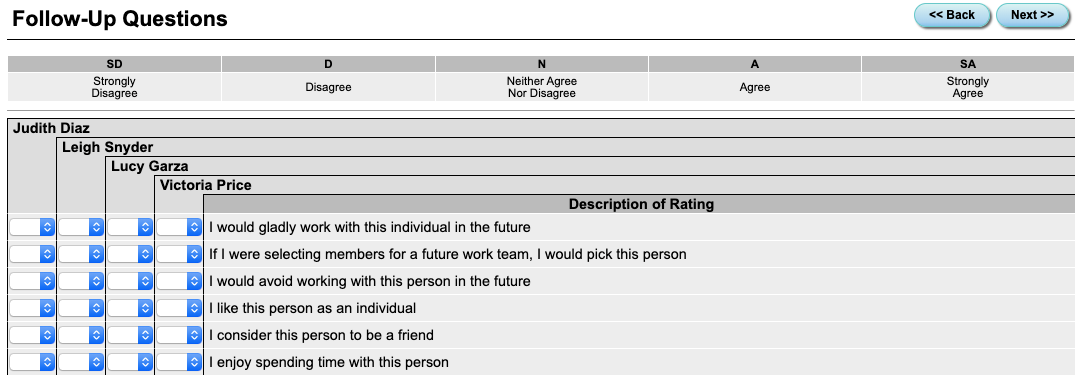The below page explains each Peer Evaluation Category and how you can use them to best benefit your students.
The Five CATME Teamwork Dimensions are five behaviors that good team-work is anchored in. The following questions prompt students to rate their team-mates based on each dimension. Each question provides descriptions of what each rating means, so students can accurately score their teammates. The Five CATME Teamwork Dimensions playlist contains videos on each of the five dimensions and we highly suggest instructors view them to fully understand the capabilities of the CATME system.
Below are screenshots of what each question will look like to students.





The following questions are additional questions apart from the five CATME Teamwork Dimensions questions that you can add to your survey to further assess team effectiveness. Below are screenshots of what each question will look like to students as well as a link to a video for each question explaining how each question can be most effectively used.

For more information, watch our video on Follow up Questions.
From Ohland, M. W., Loughry, M. L., Woehr, D. J., Bullard, L. G., Felder, R. M., Finelli, C. J., Layton, R. A., Pomeranz, H. R., & Schmucker, D. G. (2012). The comprehensive assessment of team member effectiveness: Development of a behaviorally anchored rating scale for self and peer evaluation. Academy of Management Learning & Education, 11(4), 609-630.

For more information, watch our video on Team Conflict.
From Jehn, K. A. & Mannix, E. A. (2001), “The dynamic nature of conflict: A longitudinal study of intragroup conflict and group performance”, The Academy of Management Journal, 44, 238-251.

For more information, watch our video on Team Satisfaction.

For more information, watch our video on Team Interdependence.
From Van der Vegt, G. S., Emans, B. J. M., & Van de Vuert, E. (2001), “Patterns of interdependence in work teams: A two-level investigation of the relations with job and team satisfaction”, Personnel Psychology, 54, 51-69 (with minor modifications).

For more information, watch our video on Team Cohesiveness.
The Task Attraction and Interpersonal Cohesiveness scales are from Loughry, M. L., & Tosi, H. L. (2008), "Performance Implications of Peer Monitoring", Organization Science, 19 (6): 876-890. The Task Commitment scale is from Carless, S. A., & de Paola, C. (2000), "The Measurement of Cohesion in Work Teams", Small Group Research, 31, 71-88.

For more information, watch our video on Peer Influences.
From Loughry, M. L., & Tosi, H. L. (2008), “Performance Implications of Peer Monitoring”, Organization Science, 19 (6): 876-890 (with some modification).

For more information, watch our video on Psychological Safety.
Edmondson, A. (1999). Psychological safety and learning behavior in work teams. Administrative Science Quarterly, 44(2), 350-383.
When making your survey, you have the option to add or remove questions by selecting or deselecting checkboxes in the "Activity Content" page.

In addition, you can also edit what questions are present in your survey in the Activity Editor after you create a survey.

The CATME Rater Practice Program is a game-based rating simulation that provides students the opportunity to practice rating their peers. In this simulation, students are given hypothetical teammates with certain traits to them. These traits represent behaviors that regular teammates could possess. They are then tasked with rating these teammates according to the five CATME Teamwork dimensions. At the end of the simulation, students are given immediate feedback on their ratings and ways to improve their feedback. You can always access a demonstration of Rater Practice.
Instructors can add Rater Practice during survey creation or in the Activity Editor. Instructors also have the option to make Rater Practice mandatory.
For more information on Rater Practice, please read the Rater Practice documentation and watch the videos on Rater Practice Demonstration and How to assign Rater Practice.